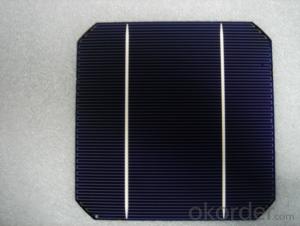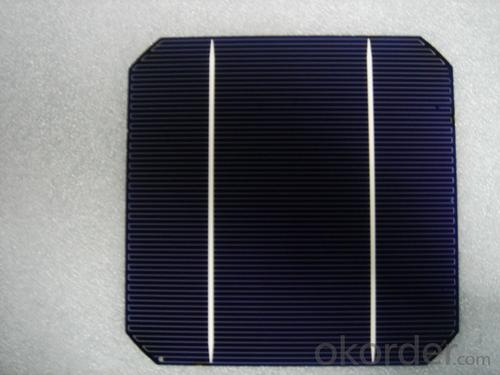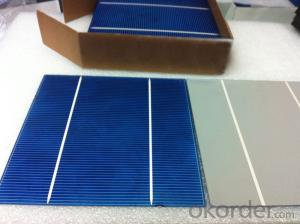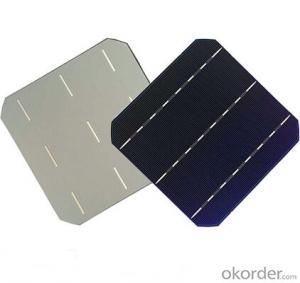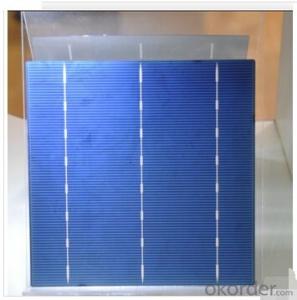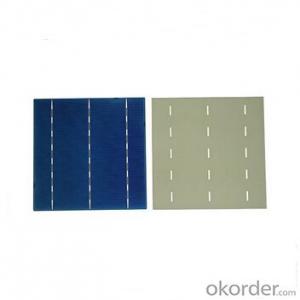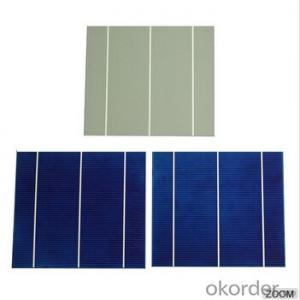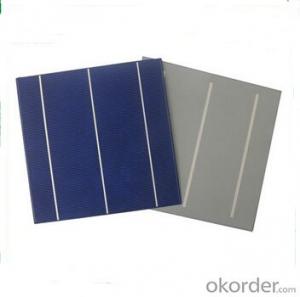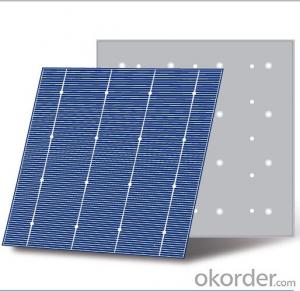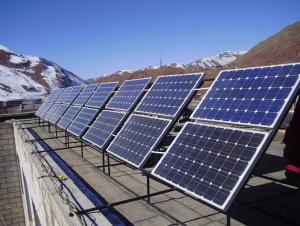Solland Solar Cells Bv High Quality Solar Cells Mono-17.2% Effy
- Loading Port:
- China Main Port
- Payment Terms:
- TT OR LC
- Min Order Qty:
- -
- Supply Capability:
- -
OKorder Service Pledge
Quality Product, Order Online Tracking, Timely Delivery
OKorder Financial Service
Credit Rating, Credit Services, Credit Purchasing
You Might Also Like
Specifications
1. High efficiency and High power.
2. Long-term electrical stability.
3. Lowest price and Fastest delivery.
4. Good quality.
Advantage:
1. High efficiency and High power.
2. Long-term electrical stability.
3. Lowest price and Fastest delivery.
4. Good quality and good service.
5.Bulk supply
6. Good Warranty
7.Big Sale
8.Made in Taiwan/Germany etc for high quality
9.More than 35 years on the lifetime.
10 DHL/Fedex/UPS/TNT/EMS etc
11 No anti-dumping tax
- Q: Can solar cells be used in mountainous regions?
- Yes, solar cells can be used in mountainous regions. While mountainous regions may have varying weather conditions and shading from surrounding peaks, solar panels can still generate electricity from sunlight. However, the efficiency of solar cells may vary depending on factors like orientation, tilt angle, and the amount of direct sunlight received. It is crucial to carefully design and install solar systems in mountainous areas to optimize their performance and take advantage of the available sunlight.
- Q: What is the impact of tree shading on solar cell performance?
- Tree shading has a significant negative impact on solar cell performance as it reduces the amount of sunlight reaching the cells, thereby reducing the overall energy output. Shading blocks direct sunlight and creates uneven distribution of light, resulting in decreased efficiency and potentially even causing parts of the cells to operate in reverse, leading to further energy loss. It is crucial to plan solar installations carefully, considering tree growth and shading patterns, to maximize solar cell performance.
- Q: Can solar cells be used in agricultural farms?
- Yes, solar cells can be used in agricultural farms. They can be installed on rooftops or open fields to generate clean and renewable energy. This energy can be utilized to power various agricultural operations such as irrigation systems, lighting, and machinery. Additionally, solar cells can help farms become more self-sufficient and reduce their reliance on traditional energy sources, thereby contributing to sustainable farming practices.
- Q: Can solar cells be used to power remote transportation systems?
- Yes, solar cells can be used to power remote transportation systems. Solar cells convert sunlight into electricity, which can be stored in batteries and used to power vehicles, such as electric cars, bikes, boats, or even small aircraft. This makes solar energy an environmentally friendly and sustainable option for powering transportation in remote areas where access to conventional power sources may be limited or non-existent.
- Q: Can solar cells be used in countries with limited sunlight?
- Yes, solar cells can still be used in countries with limited sunlight. While it is true that solar cells generate more electricity in areas with abundant sunlight, they can still function and produce energy in regions with less sunlight. Advances in solar panel technology, such as the use of more efficient materials and improved designs, have made it possible to harness solar power even in countries with limited sunlight. Additionally, the use of energy storage systems, like batteries, can help store excess energy generated during peak sunlight hours for use during low-light periods. Therefore, solar cells can still be a viable and sustainable energy solution in countries with limited sunlight.
- Q: Can solar cells be used in desert regions?
- Yes, solar cells can be used in desert regions. In fact, desert regions are often ideal for solar energy production due to their high solar irradiation levels and abundant sunlight. The availability of vast open spaces in deserts allows for the installation of large-scale solar farms, which can efficiently harness solar energy to generate electricity. Additionally, the dry climate in deserts minimizes the risk of cloud cover, ensuring consistent solar energy production.
- Q: How to manufacture solar cells?
- An experiment can show the whole process of manufacturing the solar cells.
- Q: Can solar cells be used for powering desalination plants?
- Yes, solar cells can be used for powering desalination plants. Solar energy can be converted into electricity through solar cells, which can then be used to power the various processes involved in desalination, such as pumping water, filtering, and removing salt. This renewable energy source offers a sustainable and environmentally friendly solution for powering desalination plants, reducing the reliance on fossil fuels and minimizing carbon emissions.
- Q: How are solar cells used in agricultural applications?
- Solar cells are used in agricultural applications to generate electricity for various purposes, such as powering irrigation systems, lighting in greenhouses, and running equipment like pumps and fans. They help farmers reduce their reliance on traditional energy sources and promote sustainable farming practices.
- Q: Can solar cells be used in marine applications?
- Yes, solar cells can be used in marine applications. They can be integrated into boats, yachts, and other marine vessels to generate electricity from sunlight, which can be used to power various onboard systems and equipment. Additionally, solar cells can also be used to charge batteries, providing a reliable and sustainable source of energy for marine applications.
Send your message to us
Solland Solar Cells Bv High Quality Solar Cells Mono-17.2% Effy
- Loading Port:
- China Main Port
- Payment Terms:
- TT OR LC
- Min Order Qty:
- -
- Supply Capability:
- -
OKorder Service Pledge
Quality Product, Order Online Tracking, Timely Delivery
OKorder Financial Service
Credit Rating, Credit Services, Credit Purchasing
Similar products
Hot products
Hot Searches
Related keywords
